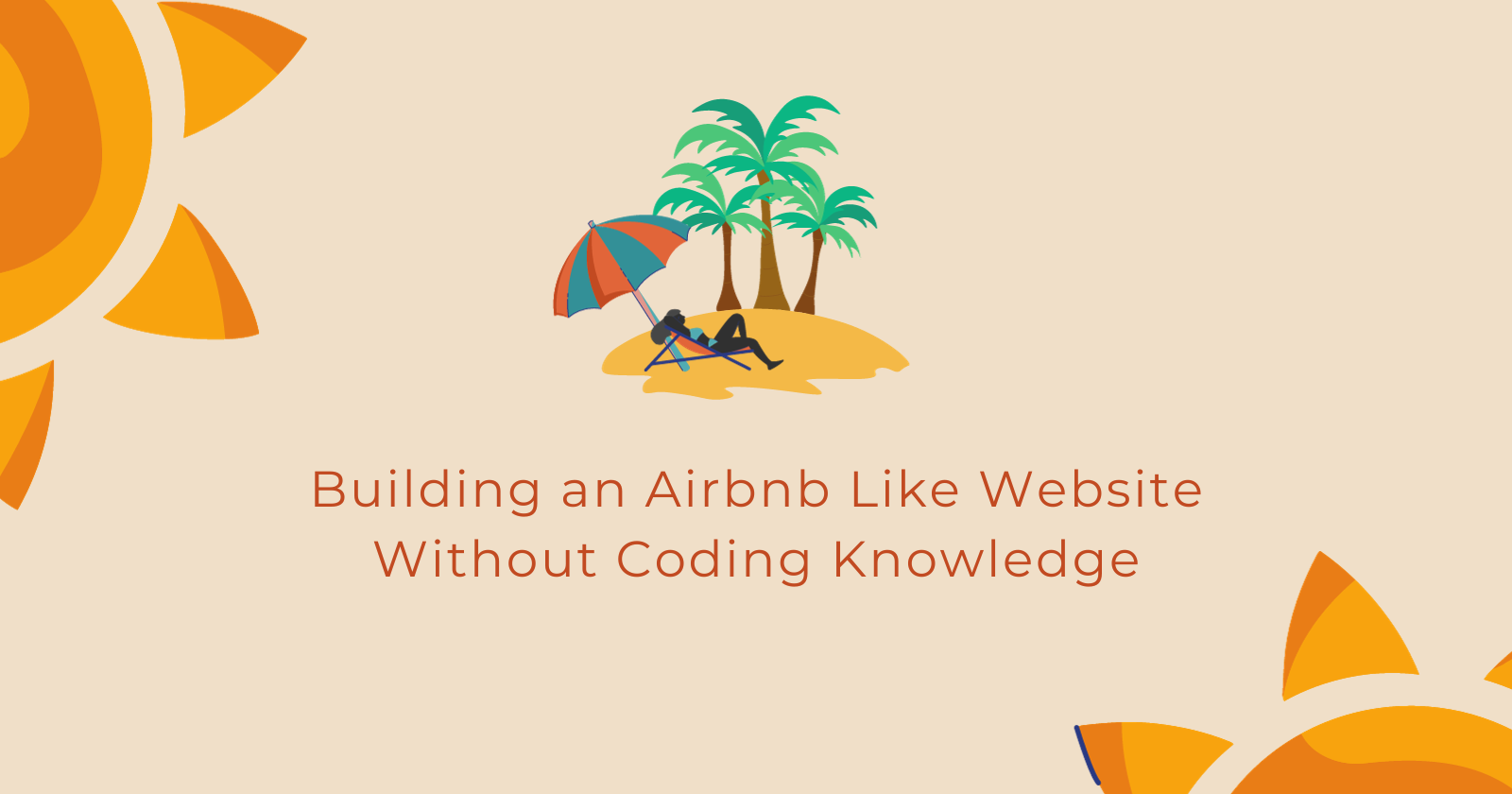How I Build an Airbnb Like Website Without Coding Knowledge
 prasad venkatachalam
prasad venkatachalamTable of contents
- What is the Airbnb Website and how does it work?
- Step-by-step guide to building an Airbnb-like website without coding knowledge
- Step 1: Choosing the Right Script
- Step 2: Setting Up the Website
- Step 3: Listing My First Property
- Step 4: Optimizing Listings for Bookings
- Step 5: Engaging Guests on the Site
- Step 6: Payment and Booking Setup
- Step 7: Marketing Strategies
- Step 8: Analytics and Performance Tracking
- Step 9: Ongoing Support from the Vendor
- Tips for building a successful Airbnb-like website from my own experience
- Final Words

In this article, I share how I successfully built an Airbnb-style vacation rental website without any coding knowledge, using a pre-built rental management script. From selecting the right platform to optimizing my listings and marketing the site, here is a step-by-step guide to launching a profitable online rental business with minimal technical skills.
What is the Airbnb Website and how does it work?
Airbnb is one of the largest and most well-known vacation rental platforms in the world. Founded in 2007, it has grown exponentially by connecting people who have space to spare with travelers looking for accommodations in new cities.
On Airbnb, private individuals and commercial hosts list their properties - everything from apartments, houses, rooms, treehouses, barns and more. Travelers can browse listings, read reviews from past guests, and book directly through the website. Payment is processed securely and details like check-in instructions are provided.
After a booking is made, the host and guest can communicate directly about the stay. Upon completion, they are both encouraged to review each other publicly. These reviews help build profiles and credibility over time.
The site also allows travelers to explore destinations through local experiences booked on Airbnb like cooking classes, excursions and more. This has expanded beyond just accommodation rentals.
With such a successful model, many people want to launch their own Airbnb-style website. However building such a complex website from scratch requires advanced coding skills which most entrepreneurs lack. That's why using a pre-built script is a smart choice.
Step-by-step guide to building an Airbnb-like website without coding knowledge
Here is a step-by-step guide I followed to build my own vacation rental website without any coding involved:
Step 1: Choosing the Right Script
The first step was extensive research on existing no-code/low-code solutions for vacation rentals. I made a list of must-have features like booking functionality, a calendar system, reviews etc.
I shortlisted top options like Migrateshop and Zipprr - Airbnb Clone Script and evaluated pricing, support offered and reviews from real users. Zipprr stood out with its easy setup process and regular updates incorporating new features.
Step 2: Setting Up the Website
Signing up on the Zipprr platform was simple - I just had to enter some basic business and contact details. Then I was able to easily browse their admin dashboard and documentation.
I configured global settings like terms of service, payment gateways, default policies etc. Then customized website basics like logo, colors, domain etc. Zipprr helped set up the technical infrastructure for a fully-functional site within hours.
Step 3: Listing My First Property
Adding my first listing was very intuitive with Zipprr's organized interface. I uploaded high-quality photos, filled in amenities and accurate location details. The dynamic calendar allowed setting availability and price per night with just a few clicks.
I published the listing and it went live immediately, ready to receive inquiries and bookings. Importantly, I could see how it would look and function for potential guests exploring the site.
Step 4: Optimizing Listings for Bookings
For each new listing, I focused on writing compelling descriptions highlighting unique attributes. Consistently tagging photos helped improve organization.
I optimized listings on search by adding relevant keywords guests might use. Zipprr also had data to understand top performing listings for ideas. Over time, optimizing small details made listings more engaging and bookable.
Step 5: Engaging Guests on the Site
Guest engagement was crucial so I designed email templates welcoming them. Zipprr's pre-set review forms made the process simple and transparent.
I responded promptly to all initial booking inquiries through the internal chat. For any issues during stays, Zipprr's dedicated ticketing system helped track resolutions centrally for future reference.
Positive reviews and interactions built credibility allowing me to increase prices over time with confidence. Regular site and social media updates kept the property top-of-mind.
Step 6: Payment and Booking Setup
Setting up popular payment gateways like PayPal was extremely easy through Zipprr's integrations. I could configure flexible cancellation policies and handle deposits appropriately.
Detailed booking workflows helped manage everything from initial inquiries to check-ins seamlessly. Automatic confirmation emails sent contract copies to both parties for accountability.
Dispute mediation tools came in handy to resolve a small number of issues amicably without court involvement, protecting future business.
Step 7: Marketing Strategies
I drafted engaging blog posts specifically for my site discussing the area and rentals. Appealing photos brought stories to life.
Google Ads were configured expertly by Zipprr support to target relevant keywords. Social promotion through Facebook and Instagram helped build an audience over time.
Offline efforts like brochures at local tourism booths complemented digital strategies. Consistent posting kept the property fresh in potential guest searches and feeds.
Step 8: Analytics and Performance Tracking
Dashboard metrics within Zipprr gave property-level and consolidated site performance at a glance. Detailed reports helped understand seasonal trends and top countries.
Google Analytics integration provided complementary external usage data. Metrics were analyzed to fine-tune strategies continually based on actual booking drivers and customer behavior.
Step 9: Ongoing Support from the Vendor
Zipprr support was invaluable through weekly trainings, a knowledge base of common questions and direct technical tickets. Regular system upgrades ensured compliance and increased functionality.
The community forum facilitated helpful peer discussions addressing wide-ranging vacation rental business challenges. Subscription and services were worthwhile long-term investments in ongoing site success.
Tips for building a successful Airbnb-like website from my own experience
Here are the top tips from my experience running a self-hosted rental site successfully for over 3 years:
Focus heavily on high-quality, consistent listing photos and comprehensive descriptions
Respond to all inquiries promptly through the system for tracking
Provide best-in-class communication and cleaning standards for guests
Cross-promote listings on other booking sites and social profiles
Continually capture email addresses to nurture repeat and referral traffic
Drive bookings during off-peak periods with special offers and packages
Leverage multiple payment methods as per guest preferences
Set up proactive communication templates for reminders
Engage locally to expand listings beyond owned properties over time
Analyze metrics monthly to introduce optimized strategies
Persist through expected ups and downs - consistency is key to long-term
Final Words
I hope this detailed guideline provides entrepreneurs like myself a step-by-step blueprint to launch a successful online vacation rental business without any coding knowledge using a proven system like Zipprr.
Subscribe to my newsletter
Read articles from prasad venkatachalam directly inside your inbox. Subscribe to the newsletter, and don't miss out.
Written by

prasad venkatachalam
prasad venkatachalam
With over 10 years in web and app development, I'm more interested in writing about clone solutions of popular brands.